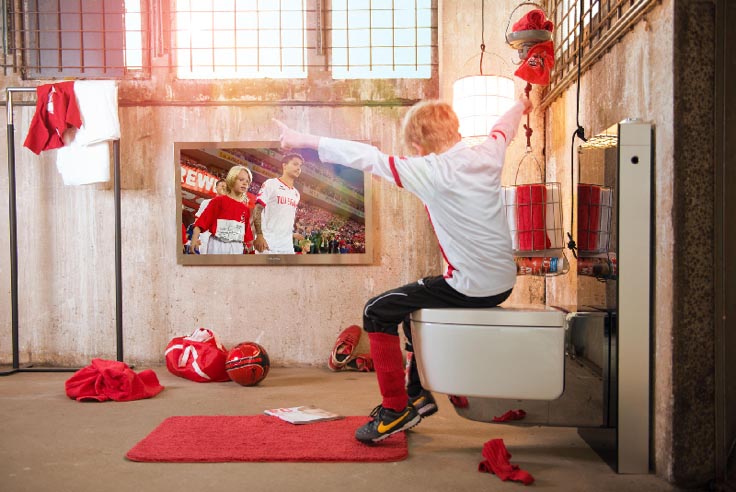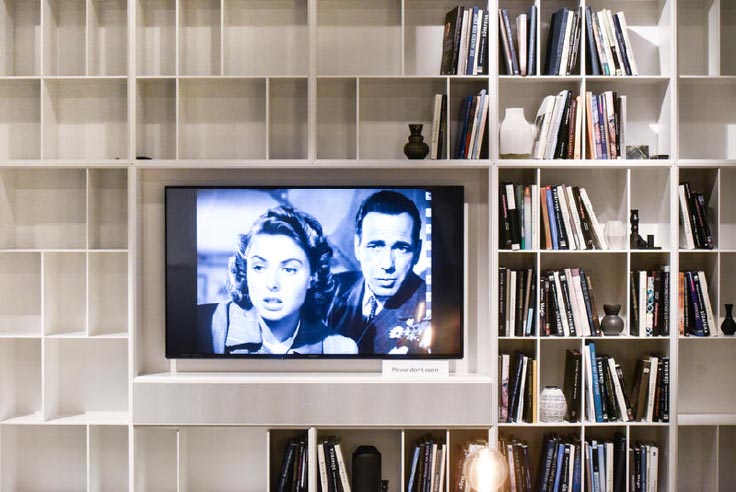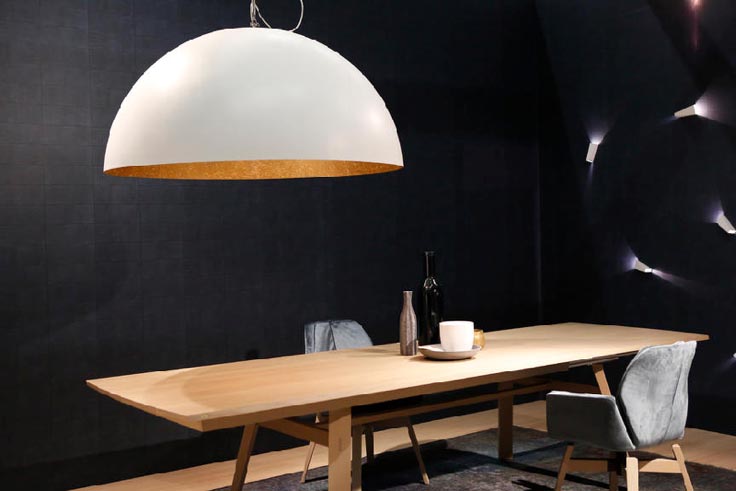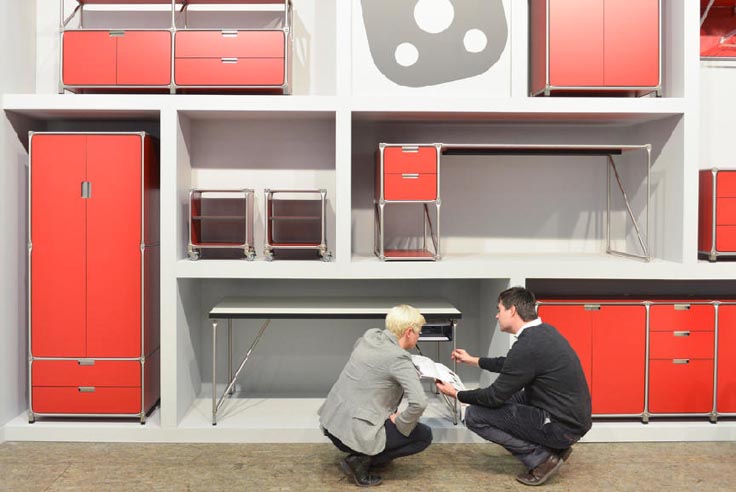GERMANY – The Association of the German Furniture Industry (VDM), based on their research on megatrends and a survey of exhibitors at imm cologne 2016, detected trends in the furniture industry and interior design for 2016 season . Here are the findings:

Our living areas will become smaller. The rural exodus continues unabated and the high rents in the big cities force us into smaller apartments. What were once public urban spaces are increasingly becoming private. Furniture is once again becoming more multifunctional and smaller.
Our homes will become “healthier”. People today already prefer ecological materials. Awareness of the environment and health is growing. Our heating and lighting is becoming more energy efficient and our furniture is being pushed in the direction of healthy comfort, optimized in terms of ergonomics. Height-adjustable kitchen worktops, desks and beds will be increasingly in demand.
Women are changing the layout of flats. In new constructions, the open floor plan where the kitchen, eating area and living room merge into one, will carry through further. In addition, a lot of new furniture is made of lightweight material and easier to move. Multi-functionality exists thanks to women’s demands, who expect the furniture of today and the future to have multiple uses. Their own ability to multi-task needs to be matched by the furniture in the home. The banishing of the wardrobe from the bedroom can equally be ascribed to women. Instead the walk-in wardrobe offers more storage space and a better overview.

Furniture is taking on a nostalgic look. Current furniture designs are understated and very much reduced to the functional. Such furniture and accessories take us back, visually, to bygone times. Nostalgia is so popular now and for the foreseeable future because it makes us feel secure. Retro-design takes away our fear of rapid change; it is reliable. Mid- century-design, as it is called, that is to say designs from approximately 1940 to 1960, is the most sought-after in the coming season. This mid-century-character also has an impact on the general proportions of furniture. In the current season, furniture is tending to be smaller than in previous years. Despite the functions remaining the same, materials are being economized, just as in the more frugal times of the previous century.
Outdoor home making and the open-air living room. The living area of garden, balcony and terrace is becoming more important. Our investment in our “outdoor space” will continue to increase. The comforting sense of relaxation and vacation is being brought to the home balcony. Outdoor furniture looks like indoor furniture and there are no longer any limits set on comfort outdoors. Alongside the furniture there are innumerable outdoor accessories, such as rugs and lighting, which can quickly create a holiday atmosphere on the balcony at home.
Bathroom and kitchen are becoming twins. As the functional areas of the home increasingly open up towards one another and merge together, the home is becoming more cozy in general. Once just a room for personal hygiene, the bathroom is becoming homely and comfortable, in the same way that another once purely functional room, the kitchen, is taking on first and foremost a comfortable character. Washbasin or sink, smooth and elegant furniture fronts, combinations of materials such as wood, glass and stone, all with highly functional LED lighting; in this way, an aesthetic convergence of furniture elements is nowadays taking place between these once distinctly different segments. Even a wooden floor in the bathroom is now possible.
Children’s rooms are shrinking in new constructions. At the same time, the walk-in wardrobe and the bathroom-turned-wellness oasis are growing. Children’s rooms are being divided into clearly defined study zones and quiet zones. Smart, individual and chic children’s furniture that can grow with the child is popular.
In textiles, delight in combinations and stylistic inconsistencies score highly. Fuelled by the megatrend of individualization, home living is becoming significantly more colorful, especially in the textile segment; added to which are more and more daring end-customers, who freely combine colors and designs. Stripes, floral patterns, abstract graphics – the world of colors and patterns for upholstery fabrics is very diverse. Ornaments as an opulent design feature also remain popular. Whatever the fabric, the haptic experience continues to play a large role. Modern upholstery materials can be very smooth, soft or have a coarse texture – or be a mixture of all. Choosing from all of the style genres on offer inevitably leads to stylistic inconsistencies. But people welcome this because it enables them to express their individuality.
More than just a cosmetic dressing. The surfaces of what is known as case furniture are becoming more interesting. Whether on the elements of wall units, wardrobes, sideboards, chests of drawers or other cabinets, attractive finishes are to be found everywhere, using patterns, 3-D elements or particular textures, for example. Anything goes in this new front, right up to handmade wood carvings.

Sitting is becoming more comfortable. Nowadays people remain seated at the dining table after a meal instead of withdrawing to the living room as before. The furniture industry is therefore showing a particularly wide variety of individually combinable dining chairs. Whether leather or fabric, the new generation of dining chairs is impressive with its comfort and convenience. The chairs of 2016 often had a lounge feel about them, are filigree, lightweight and reminiscent of the diminutive designs of the 1960s.
Two trends for tables. First there’s the growing proportion of solid wood and second there are the new solutions for table legs. Solid wood tabletops are normally offered in oak and walnut but are now also combined with colorfully glazed table legs or metal substructures. Solid wood therefore no longer has to remain in its natural, wood-colored state. The longing for nature is undergoing a new interpretation with the help of color. Designers have come up with new solutions for table legs. Examples are table legs, which cross over one another or appear crooked, without sacrificing stability, of course.
Not all shelving is the same. At imm cologne 2016 there was an enormous variety of freely combinable shelving modules, some of which can be assembled even without any tools, and which are suitable for any need and living arrangement. Modular shelving is flexible, light and expandable. And moving a home is convenient and uncomplicated with small modules.

Design is becoming more international. Because design can produce icons in any era, it is as a result linked to the spirit of the times. Topicality, modernism and newness combine in the designs. Therefore a typical German design no longer exists. Nowadays, design is international. With hindsight, you can always tell from which era a piece of furniture is from, but not from which country. Since the middle of the 19th century, internationalization through cultural colonization, as it is known, was held to be responsible for this phenomenon. 150 years later, in the era of globalization, furniture worldwide is also taking on a global design vocabulary, which emerges, especially in urban areas, from the ever-adapting living conditions.


0 Comments